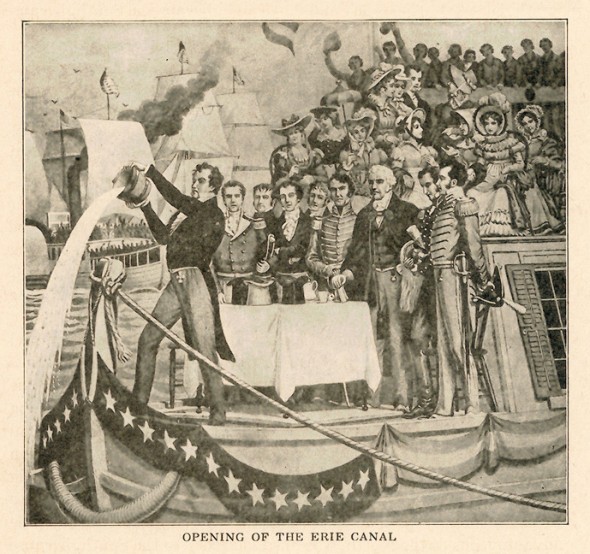
For centuries, most trade west of the Atlantic coast was limited to passive passage along the Mississippi, sending products downstream merrily, merrily, merrily on a lazy river ride from the Great Lakes region to ports like New Orleans. That is, until we had the bright idea to forge our own passageway east. The Erie Canal, proposed in 1808 and completed in 1825, was the first great US canal, inspiring a mid-century canal craze. Spanning more than 300 miles across NY, the canal was an engineering feat unparalleled in its time, using a system of locks to account for an elevation difference of roughly 600 feet. Its design and construction spawned boatloads of new technologies – including land-clearing equipment, the dumping wheelbarrow, and specially-designed mud for canal lining – not to mention a steam engine revolution and the first real generation of modern American Civil Engineers. How cool! We all thought so then, too, and commemorative parties abounded, including the famous “Marriage of the Waters” (pictured above), in which a bucket of Great Lakes water was dumped in a New York harbor. Looks like a real rager! Yet as Americans celebrated their reaffirmed sense of accomplishment, greatness, and independence in the shadow of the War of 1812, the Erie Canal was busily strengthening ties between the Midwest and Northeast, resulting in a commercial and social isolation of the South. It would not be long until the Civil War, and in those years preceding? The Erie Canal, socioeconomic rabble-rouser, indeed played a huge role in exacerbating North-South sectional tensions.
The Erie Canal as Civil War Catalyst
by
Tags:
Leave a Reply